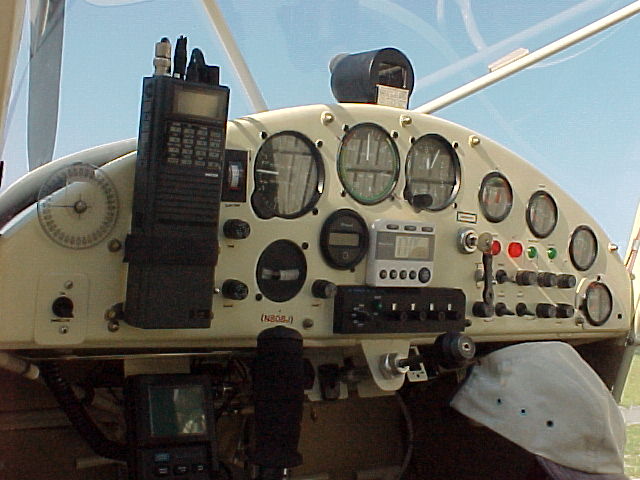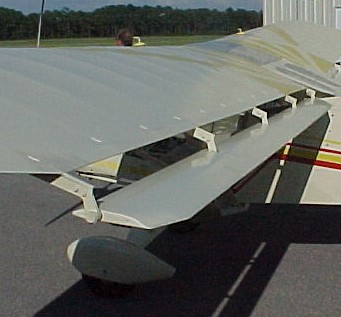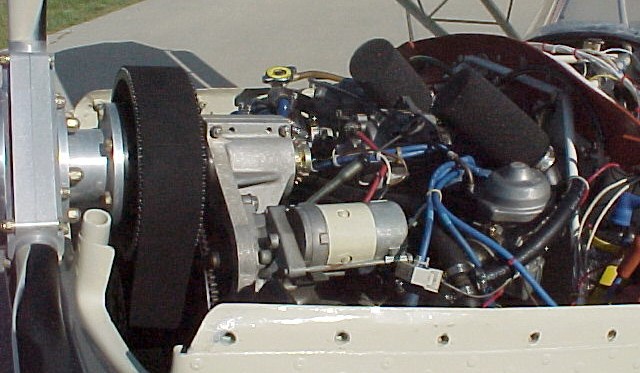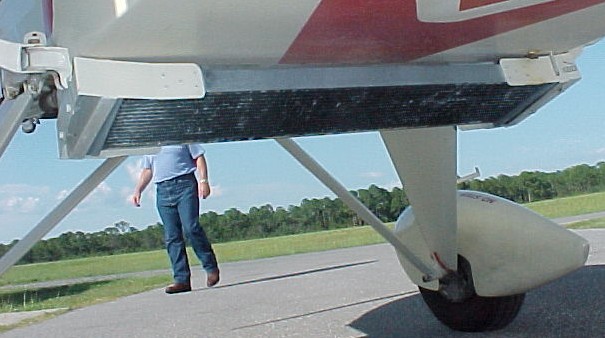 |
June 1999
EAA Chapter 108
|
 |
June 1999
EAA Chapter 108
|
| President, Robert Sutherland, 862-6191, sudsflyer@fwb.gulf.net
Vice President, Bob Brooks, 837-0531, bobbro@gnt.net Treasurer, Sandy Bowen, 862-7229 Secretary, Cliff Nunnery, 862-2673, joycen@cybertron.com |
Newsletter and Web Page Editor, John Jones, 682-3867,
jonesj@bsc.net
Technical Advisor, Bob Ray, 678-3133, banjobob@ix.netcom.com Flight Advisor, Monte G. McLean, 862-4832, montemac@cybertron.com Young Eagles Coordinator, Gerald Poltorak, 862-0652, aimhigh@bsc.net |
| Inside This Issue - June 1999 |
| Destin Young Eagles
Panama - Bush Flying and Bent Airplanes Pancake Breakfast Looking for Program Ideas |
Definition of a Great Landing
The Sunspots Cometh John Oglesby's Avid Mark IV STOL Fly Market |
| Chapter News
Announcements, new members, upcoming activities. |
The next chapter meeting is scheduled for June 15, 1999. The program will either be a new EAA video or a surprise guest. (We're still working the surprise guest issue.)
Destin Young Eagles
Gerry Poltorak has put together a Young Eagles day at Destin Airport on June 12, 1999 at 9:00 a.m. Several youngsters will be there for rides, but more youth are still needed. If you've know some interested teen-agers or are interested in helping out, give Gerry a call at 862-0652
Ed Armbruster was finally able to discuss flying in Panama at the May meeting. After serving a brief stint in the Air Force, Ed became a civilian in 1964 and took a job as an electronics technician with Martin-Marietta in Panama. A few years later, Ed transferred to the hydrographic division of the Canal Company and began monitoring river levels on the isthmus. Ed continued in this job until he retired in 1985. He stayed in Panama a few years after retirement and did charter flying while his wife worked for Army intelligence. Ed and his wife have now moved back to Florida.
Most of the years Ed was in Panama, his part-time job was serving as a flight instructor. One of his first instructing jobs was at the Aero Club at Albrook AFB. Ed spent much of his time in the club's T-34 "measuring" runways throughout the country to determine if the runways were suitable for club use. Ed says, with a little creativity, that he never failed to "measure" at least the minimum length required by the Air Force. When the Aero Club closed in 1969, Ed borrowed a bulldozer from the military and cleared a runway on the edge of the canal near the center of the isthmus. This little strip eventually hosted over 30 planes and was even an international airport for a time. The "owners" of this strip occasionally hosted airshows and contests to raise money and provided as much flight instruction as they could manage. Ed's little airport was recently closed due to the treaty returning the canal to Panama.
One theme throughout Ed's slides was bent airplanes. Flying in and around Panama was certainly tough bush flying and many planes paid the price. Ed told tale after tale of pilots landing in places most folks would never put a plane intentionally. He even explained how he crash landed his new Cessna and had to haul it back to civilization on a donkey a year later.
Ed talked at length about the many Indians that he encountered during his travels through Panama. The Cuna Indians were a very independent bunch and lived on islands separate from the mainland. These islands had been built by hauling thousands of canoes of dirt into the shallow coastal waters. The islands had no source of water, so this, too, was brought in canoes. Many of the indians maintained native dress (or undress) and practiced native religions. Ed found amusing the pile of "medicine sticks" that frequently appeared at the ends of runways.
The Choco Indians lived inland along the rivers. Ed worked closely with these indians as part of his hydrographic job. He even hired one young lady to take water samples and depth measurements. Ed and his team traveled along the rivers in a dugout boat that they purchased from these indians. Ed also mentioned that the Choco liked to eat iguana. When asked how it tasted, Ed replied, "Tastes like chicken."
Miscellaneous
Remember Beta?
Bob Sutherland is in search of a Beta format VCR. He's got some aviation videos that he's like to transfer to VHS format. If you've got a Beta VCR that still works, please let Bob know.
Looking for Nerds
If you've ever wanted to learn how a web page works, this is your big chance. John Jones is looking for a little help digitizing some old scrapbooks to add to the web page. All you need is a computer and a little time. Contact John Jones at 682-3867 or jonesj@bsc.net if you're interested.
Electronic Newsletter Available
Folks with Internet access can now receive the newsletter electronically if they prefer. Printing and mailing costs the chapter about 50 cents per newsletter. Electronic delivery will save the chapter a little money and you'll receive a few extras that aren't in the paper version. Let John Jones know if you'd prefer an electronic copy instead of a paper copy.
Meeting Ideas
The Chapter leadership is looking for ideas for meeting programs. It is hoped that some programs on various aspects of aircraft construction can be scheduled later this year. Topics might include sheet metal, composites, electrical systems, wood, fabric, and welding. See Bob Sutherland with your ideas.
Treasurer's Report - In April, the chapter had an account balance of $804.98.
Logo Contest - The logo contest is on hold for remodeling (of Bob's house...)
Going My Way?
The chapter is looking for ways to match members and Young Eagles with
empty seats. One idea was to use the web page. Other ideas
might be an answering machine or a list posted somewhere. Bring your
ideas to the next meeting for discussion.
| Flying Fun
Chapter workshops, fly-ins, parties, and trip reports. |
The annual pancake breakfast on May 22, 1999 at the Crestview
Airport was a resounding success. At least 50 folks showed up
and about 10-20 of those were from out of town. Two pilots even came
down from Atlanta and a few folks from Evergreen/Monroeville dropped by,
too. One attendee commented that the pancakes were fabulous and the
new grill made some mighty tasty sausages. Everyone should thank
Bill and Julia Tuttle for organizing such a great event.
| Hangar Flying
Aviation jokes, tall tales, and other humor. |
| Shiny Side Up
Important safety or regulatory issues |
As we rely more on satellite navigation for keeping track of where we are, we need to understand the impact of sunspots and flares on our navigation signals. The number and size of sunspots is currently increasing as sunspot cycle 23 approaches its peak in the year 2000. This increase in sun activity will affect earth's ionosphere and thereby interfere with navigation signals. Those little GPS boxes are neat, but we must understand their limitations. What follows is a summary of data from the web site of the Space Environment Center of the National Oceanic and Atmospheric Administration at www.sel.noaa.gov. This web page provides forecasts of space "weather" with predictions of navigation disruptions.
To refresh your memory, the ionosphere is formed by ultraviolet radiation from the sun striking the upper atmosphere and ionizing the particles there. Ground-based navigation systems, such as Loran and Omega bounce signals off of the ionosphere to help them carry long distances. Space-based systems such as GPS are hindered because they must pass signals through the ionosphere. The real problem for navigation systems is that the ionosphere changes constantly. Solar activity and its effects on the ionosphere rise and fall on an eleven-year cycle.

Many of you may have seen the stunning photos of solar flares on television science programs. These solar flares are large releases of radiant energy that disturb the ionosphere on the sunlit side of earth. Consequently, Loran may experience significant interference during daylight hours at the peak of a sunspot cycle. Flares are not usually a problem for GPS.
On the other hand, geomagnetic storms can cause problems for GPS. Solar activity can affect the earth's geomagnetic field which, in turn, can cause changes in the ionosphere on both the light and dark sides of the planet. The resulting ionospheric storms can change the total electron content of the ionosphere and disrupt GPS navigation signals. The amount of ionosphereic interference is dependent on latitude with the worst interference taking place along the equator. Less interference will occur near the poles. Equatorial sites may even experience ionosphereic interference during periods of low solar activity.
A third source of interference is the large quantity of protons and
electrons that may be ejected from the sun during periods of maximum solar
activity (such as the year 2000). These particles may persist in
the ionosphere and interfere with navigation signals for several days.
These particles will degrade Loran and Omega systems primarily at polar
latitudes and may affect space-based systems such as GPS by interfering
with the satellites' electronics.
| Builder’s Log
Building hints and various aircraft projects from Chapter 108. |


John's Avid is one of the few planes in Chapter 108 to ever float on
water. Of course, the Mark IV is not a float plane, but it did float
around John's house quite a bit when Hurricane Opal struck in 1995.
In spite of the storm damage, John was able to complete his little flyer
in 1996 after about three and one half years of work.


John was first attracted to the Avid planes because they were slightly
stronger than the similar Kitfox models. John chose the Mark IV with
the longer STOL wing so that he could use a Subaru engine. The wings
have full-span flaperons and fold by removing a single bolt at the leading
edge of each wing. Flight controls are moved completely by pushrods
except for the rudder that uses a cable.


The Subaru engine is an EA-81 converted by Stratus Inc. The engine is rated at 100 hp and turns a 3-blade Warp Drive ground adjustable composite prop. The radiator for the water-cooled Subaru is mounted under the cockpit and in over 320 hours of flying, John has never had to add any water. The engine spark is provided by dual ignition systems. Both systems power a single set of spark plugs and a switch allows the pilot to choose which ignition system to use. John says one system starts better and the other gives a higher RPM so he uses one system for startup and the other for flying. Air for the engine is supplied by two Bing altitude-compensating carburetors resulting in a plane with no mixture knob! For those of you that haven't heard this engine, it's really smooooooth and only took about one blade to start. Cruise at 4000 rpm is about 105-110 knots and consumes 3.5 gph.
Aside from the engine, this Mark IV is fairly standard. John only
mentioned two other changes from the plans.
John had planned original style doors with the lower half aluminum
and the upper half plexiglass. However, the original doors were damaged
in the flood and John replaced them with full bubble doors that add about
six inches of shoulder width. The other change was placing the battery
in the rear of the airframe to offset the additional weight of the Subaru
engine.
Recently John has begun construction on an RV-8. He says that
right now he has airplane parts stored in every nook of his house.
We'll try to get a story on the RV-8 in a future newsletter. Due
to changes at his current hangar, John is also looking for a new home for
his Avid. If anyone knows of a little extra hangar space, please
let John know at 654-1051.
| Fly Market
Contact John Jones to place an ad. |
| Calendar |
July 17, 1999 - Ice Cream Fly-in, Sikes Airport, Crestview,
FL
July 20, 1999 - Monthly Chapter Meeting
July 28 - August 3, 1999 - EAA
Airventure Oshkosh